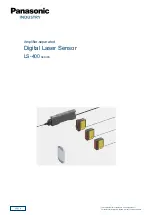
6/10/13 – 11
10
4.
Ensure the wear on the
Slic Pin
is not excessive.
The Slic Pin is prone to wear due to friction between
itself and the climbing rope.
5.
Check the
Side Plates
for damage. The Side Plates
are designed to be slightly bent but symmetrical.
6.
Rotate the
Wheel
to ensure it moves freely and is
not obstructed by rope fibers or anything else.
7.
Ensure the
Tether Attachment Point
bolt is tight
and that there are no gaps between the bolt heads
and the outsides of the Side Plates.
Dynamic Inspections
Throughout the course of a climb, the climber, as an
expert, must constantly monitor the system and
surroundings for changes that may present a hazard.
For example, a friction hitch may begin to loosen and
respond differently after a very long ascent. Memorize
the
“TREES”
method described below for maintaining
safety while climbing.
[ T ]
ight friction hitch.
Always be sure the friction hitch
is tight and will engage in the event of a fall at all
times. Even if a friction hitch was very tight when
first tied, it can become loose over the course of a
climb.
[ R ]
ope
must be securely attached to a solid anchor
point and remain free of damage or wear at any
point it is repeatedly contacting anything (branches,
pulleys, rope wrench, etc.)
[ E ]
xcess rope at the end of the climbing rope.
This
is DESIRED so that the climber does not come off
the rope.
[ E ]
xcessive slack in the system.
This is NOT
DESIRED and should be avoided.
[ S ]
harp objects.
Burrs and sharp edges in the system
or in the tree can damage the rope and must be
avoided.
[ TREES ]
Inspect all parts of the tree supporting any
part of the body weight to ensure they are not
cracking, creaking, or overly bent.
Post-Climb Inspections
The inspections performed after a climb should be the
same as the inspections performed pre-climb. Particular
attention should be given to the post-climb inspections
when any of the following occurred during a climb:
1.
A fall from heights. If the reason for the fall is due to
failure of any of the equipment, discard it
immediately.
2.
Any intermittent fall. This will likely cause damage to
the rope wrench, friction hitch, and climbing rope.
3.
Very long climbs, especially those involving many
descents and ascents.
General Maintenance
Never leave the Rope Wrench or any
other components out in the elements.
Even if exposure to the elements does
not damage the equipment, it can still
alter the functionality.
The Rope Wrench should be cleaned
after each use with a mild detergent
and allowed to dry naturally.
The moving parts of the Rope Wrench
may be oiled if desired. Wipe away
any excess oil before use. Ensure the
oil type will not degrade any rope
used in the Rope Wrench System.





























